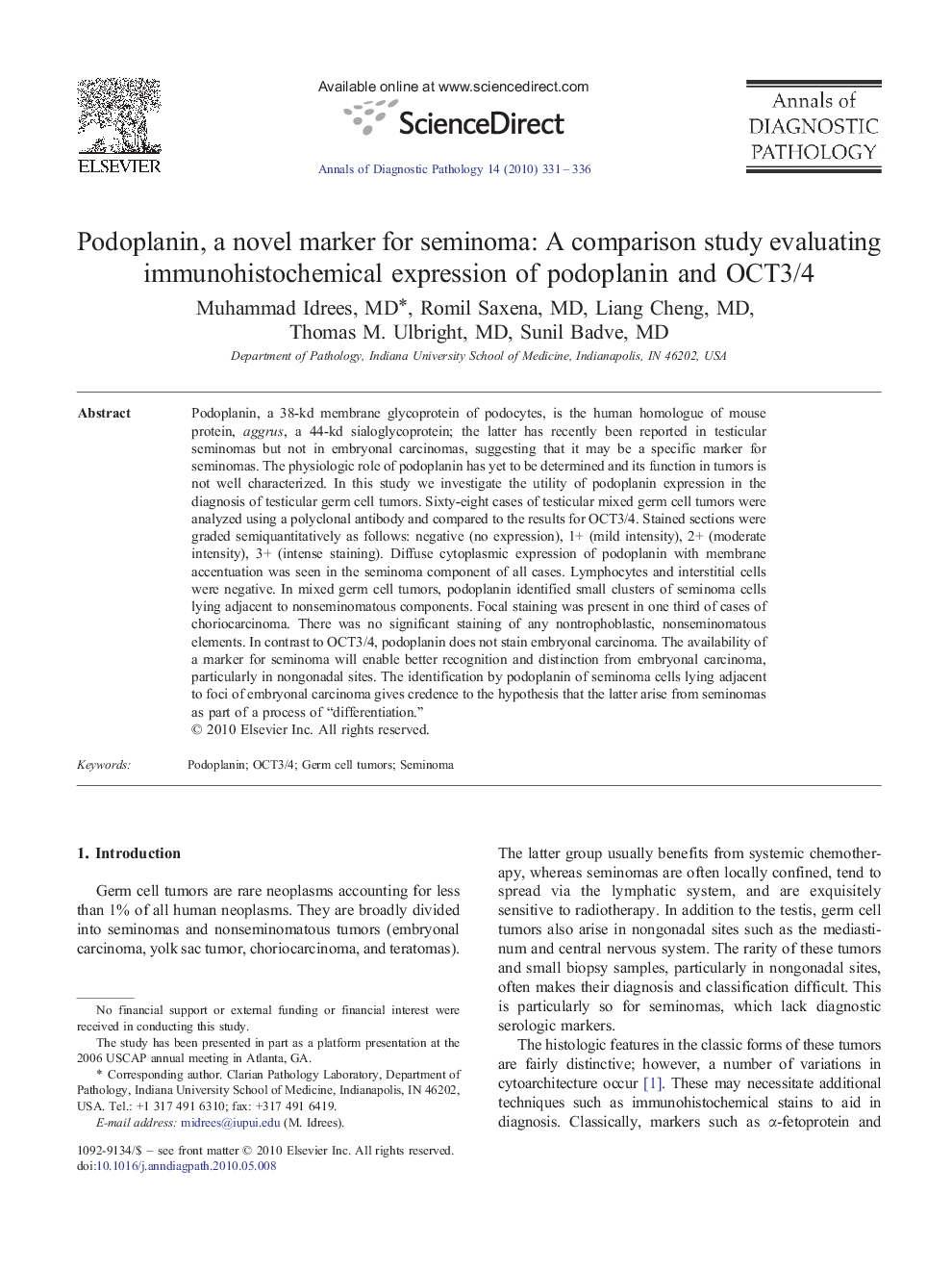| Article ID | Journal | Published Year | Pages | File Type |
|---|---|---|---|---|
| 4130159 | Annals of Diagnostic Pathology | 2010 | 6 Pages |
Podoplanin, a 38-kd membrane glycoprotein of podocytes, is the human homologue of mouse protein, aggrus, a 44-kd sialoglycoprotein; the latter has recently been reported in testicular seminomas but not in embryonal carcinomas, suggesting that it may be a specific marker for seminomas. The physiologic role of podoplanin has yet to be determined and its function in tumors is not well characterized. In this study we investigate the utility of podoplanin expression in the diagnosis of testicular germ cell tumors. Sixty-eight cases of testicular mixed germ cell tumors were analyzed using a polyclonal antibody and compared to the results for OCT3/4. Stained sections were graded semiquantitatively as follows: negative (no expression), 1+ (mild intensity), 2+ (moderate intensity), 3+ (intense staining). Diffuse cytoplasmic expression of podoplanin with membrane accentuation was seen in the seminoma component of all cases. Lymphocytes and interstitial cells were negative. In mixed germ cell tumors, podoplanin identified small clusters of seminoma cells lying adjacent to nonseminomatous components. Focal staining was present in one third of cases of choriocarcinoma. There was no significant staining of any nontrophoblastic, nonseminomatous elements. In contrast to OCT3/4, podoplanin does not stain embryonal carcinoma. The availability of a marker for seminoma will enable better recognition and distinction from embryonal carcinoma, particularly in nongonadal sites. The identification by podoplanin of seminoma cells lying adjacent to foci of embryonal carcinoma gives credence to the hypothesis that the latter arise from seminomas as part of a process of “differentiation.”
